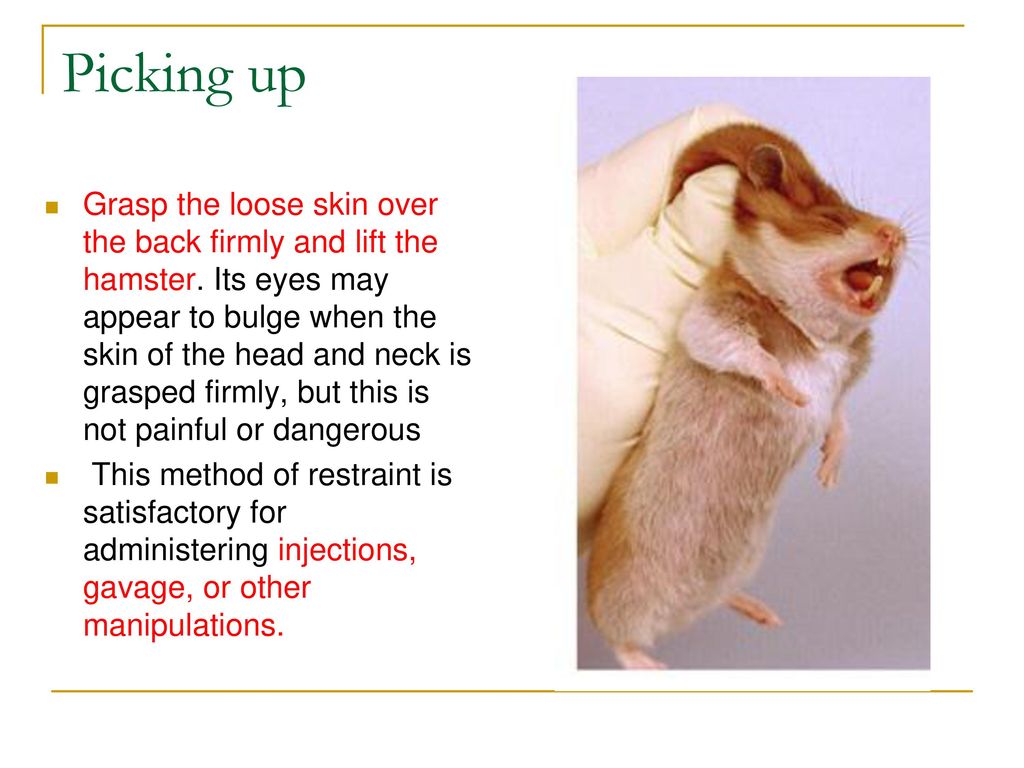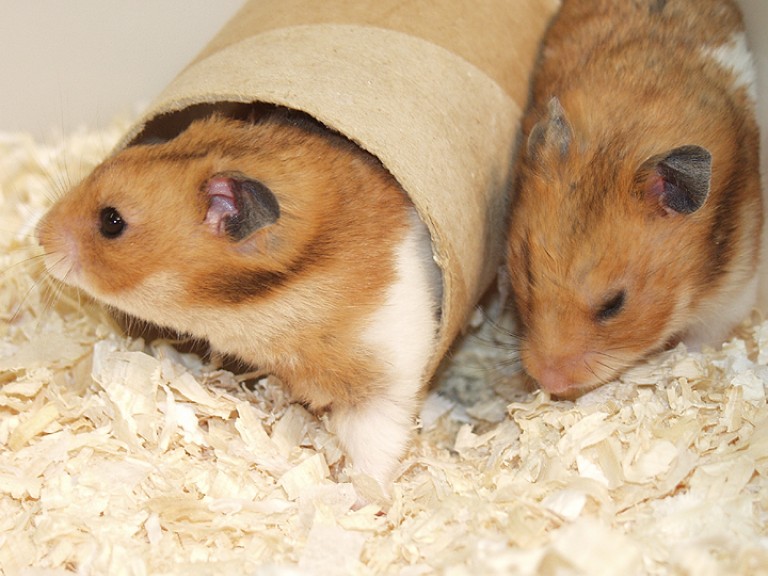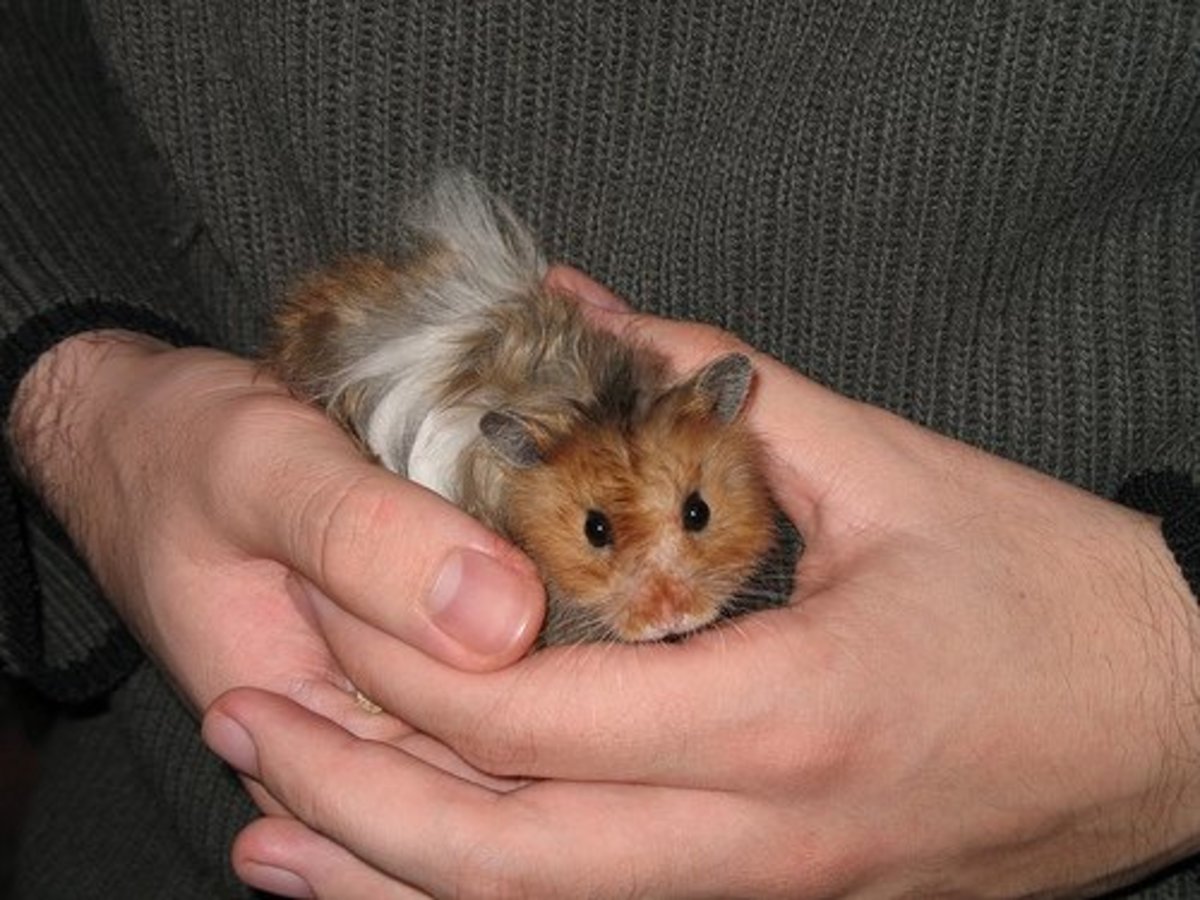Have you recently brought a furry friend into your home? Are you unsure about the best way to handle and interact with your new hamster? Look no further! In this blog post, we’ll share some helpful tips and techniques for safely and joyfully handling your beloved pet.

1. Recommended techniques for handling hamsters
When it comes to handling hamsters, recommended techniques ensure not only that the hamster is comfortable, but that you are not injured in the process. Cupping the hamster securely on both palms is a great way to keep them feeling safe and in control. Observing the hamster first in the cage or carrier can help familiarize them with you and reduce their stress.
Additionally, using quiet handling techniques can avoid arousal and minimize stress for the hamster. Regular habituation to human contact is necessary to help the hamster feel comfortable with you and their new home. Lastly, proper techniques for humane handling, restraint, and use of hamsters can ensure both your safety and the hamster’s well-being. Overall, handling your hamster with care and consideration can help form a bond and create a happy and healthy relationship.

2. Cupping the hamster securely on both palms
When it comes to handling hamsters, experts recommend using the cupping method to pick them up. This involves forming a cup with both hands around the hamster, scooping it up securely, and bringing it close to your chest. It’s important to observe your hamster first in its cage or carrier to make sure it’s in a relaxed state before attempting to handle it.
Hamsters can bite painfully if they feel threatened, so gentle handling is crucial. It’s also important to minimize stress for your furry friend during handling and to habituate them to regular human contact. Using quiet handling techniques can help avoid arousal. If you need to transfer your hamster to a new cage or weigh them, proper techniques for humane handling and restraint are necessary. While some hamsters may be challenging to handle, with patience and practice, you can master the art of safely and humanely handling your furry friend.

3. Observing the hamster first in the cage or carrier
Observing the hamster first in the cage or carrier is a crucial step in the process of handling hamsters. This allows the pet owner to get familiar with the hamster’s behavior and how they would react to human contact. By observing them, one can notice if the hamster seems agitated or stressed, or if they are comfortable enough to explore their surroundings. This step also helps to minimize the chances of the hamster biting painfully during the handling process.
Additionally, observing the hamster allows the pet owner to understand their unique personality, which will help them build trust and develop a bond with the hamster over time. By following this step and the recommended techniques for handling hamsters, pet owners can provide a safe and comfortable environment for their furry friends.
:strip_icc()/GettyImages-147918612-3c947ba718574a938de29de77fe39d75.jpg)
4. Hamsters can bite painfully, gentle handling is crucial
It is important to remember that hamsters can bite painfully, making gentle handling crucial for their well-being. As mentioned earlier, handling should be done quietly and calmly to avoid arousing anxiety in the hamster. It is recommended to cut the hamster securely on both palms and observe them first to understand their behavior before handling them. Regular habituation to human contact is also necessary for socializing and taming the hamster.
Additionally, minimizing stress during handling is important, as small rodents may bite or become aggressive in the face of stress. Therefore, following proper techniques for humane handling, restraint, and use of hamsters is crucial for their safety and comfort. With patience and care, hamsters can become friendly and enjoyable to handle.

5. Minimizing stress for hamsters during handling
When handling hamsters, minimizing stress is key to keeping your furry friend calm and comfortable. As previously mentioned, strong smells can distress your hamster, so washing your hands before handling them is important. Additionally, talking to your hamster quietly and moving slowly can help to avoid startling them, which can result in biting. It’s also essential to house your hamster away from items in the home that can be stressful for them, such as loud televisions or other pets.
Finally, when traveling with your hamster, taking the easiest and smoothest path home can minimize stress related to travel. By following these techniques, you can ensure a positive and stress-free handling experience for your hamster.

6. Regular habituation to human contact is necessary
Regular habituation to human contact is a crucial factor in handling hamsters. As mentioned earlier, gentle handling techniques are necessary to avoid biting and minimize stress for hamsters. Research also suggests that habituation to human contact through regular, gentle handling is necessary for all species, including hamsters. This means that owners should handle their hamsters regularly to create and deepen the bond between them. Furthermore, hamsters kept in groups may exhibit aggressive behavior, making handling difficult.
Therefore, it is essential to handle them individually to ensure they are comfortable and stress-free during the process. By habituating hamsters to human contact, owners can establish a strong relationship with their pets and provide them with the care and attention they deserve.

7. Using quiet handling to avoid arousal
When it comes to handling hamsters, it’s important to remember that they startle easily. That’s why using quiet handling techniques is crucial to avoid arousal and minimize stress for the animal. As mentioned earlier, cupping the hamster securely on both palms and observing it first in the cage or carrier can help establish a bond of trust between the human handler and the hamster. In addition to that, it’s recommended to habituate hamsters to regular human contact. However, if the hamster is sleeping, gentle handling is important to prevent startling and potential biting. Cage transfer or weighing techniques should also be carried out with care to avoid causing any undue stress.
Proper techniques for humane handling, restraint and use of hamsters are essential for both high-quality research and humane animal care and use. Employing nonaversive techniques such as open-hand handling and tunnel handling should be employed, along with avoiding tail-picking. By following these recommended techniques for handling hamsters, one can ensure the animal’s well-being and happiness.

8. Cage transfer or weighing techniques
Cage transfer or weighing is an important aspect of handling hamsters in a laboratory setting. According to the factual data, it is recommended to habituate hamsters to human contact by holding them loosely between closed hands initially. When it comes to cage transfer or weighing, using quiet handling is essential to minimize stress and arousal. One effective method is to cup the hamster securely on both palms and transfer it from one cage to another.
Scoring the body condition of rodents is also a non-invasive way to assess their health. However, hamsters can bite painfully, so it is important to handle them gently and not startle them. By giving hamsters ample space and using humane handling and restraint techniques, they can be properly cared for in a laboratory setting.
:strip_icc()/how-to-handle-and-tame-pet-hamsters-1238956-hero-a069fe65c95c4753998e6bb5112a6b88.jpg)
9. Difficulties in handling hamsters
Despite the best efforts of hamster owners, there may be difficulties in handling these delicate creatures. Hamsters are easily startled and can become agitated, which might result in biting. To minimize these difficulties, it is important to let the hamster get accustomed to human contact through regular, gentle handling. Using quiet handling techniques and observing the hamster’s behavior beforehand can also help prevent arousal.
Additionally, cage transfer or weighing techniques can be useful if the hamster becomes too difficult to handle. If all else fails, proper techniques for humane handling and restraint should be used to ensure the safety of both the hamster and the handler. It is important to remember that with patience and gentle handling, most hamsters will eventually become comfortable with being held and picked up.

10. Proper techniques for humane handling, restraint, and use of hamsters
Proper technique is important when handling and restraining hamsters to ensure their safety and well-being. When holding a hamster, the owner should use a two-handed technique, carefully cupping the hamster in their palms. Observing the hamster first in its cage or carrier can also help to minimize stress and reduce the likelihood of painful bites. An important aspect of handling hamsters is habituating them to human contact through regular contact and gentle handling.
Restraint techniques such as laying the hamster on a flat surface and covering it with the palm of the hand or gently pressing down on the back while it is on the floor can also be effective. It is crucial to use only approved and humane methods for euthanasia. By following these proper techniques for handling, restraint, and use of hamsters, owners can ensure the safety and well-being of their furry companions.
- From Whiffs To Winks: Decoding Hamster Euphemisms And Odors - April 12, 2024
- Fit And Fabulous: The Importance Of Exercise For Your Hamster’s Health - April 12, 2024
- Farewell, My Furry Friend: Honoring Your Hamster’s Life And Legacy - April 12, 2024


